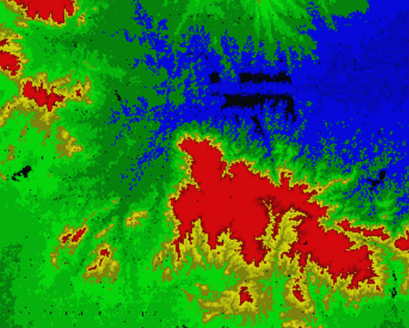LiDAR Spatial Data Analysis: Unlocking Insights from 3D Point Clouds
LiDAR, which stands for Light Detection and Ranging, is a remote sensing technology that uses laser beams to collect precise 3D spatial data about the environment. LiDAR has become increasingly popular in recent years due to its ability to generate high-resolution maps and models of various types of terrain and structures. LiDAR data is typically collected from airborne or ground-based platforms and consists of millions of 3D point clouds, which can be processed and analyzed using specialized software.
LiDAR spatial data analysis has a wide range of applications in fields such as urban planning, forestry, agriculture, geology, and archaeology. In this article, we will explore some of the key methods and techniques used in LiDAR spatial data analysis and discuss how they can be used to unlock insights from 3D point clouds.

One of the most important steps in LiDAR spatial data analysis is data preprocessing, which involves filtering and cleaning the raw LiDAR data to remove noise, outliers, and other unwanted artifacts. This step is critical to ensure that the resulting 3D point clouds are accurate and reliable. There are several different methods and algorithms that can be used for data preprocessing, such as ground filtering, point cloud segmentation, and feature extraction.
Additional resources:Top 5 Tips for Choosing a Precision Air Conditioner in India
Are Virtual Call Center Services the Future of Customer Support?
Is the Liebert APM UPS the Best Choice for Data Centers?
Boost E-Commerce Sales with Testimonials SMS: How to Get More Conversions
Everything you need to know about X3V VOIP IP PHONE
Which Structure Type is Best for Self-Supporting Towers?
What is a VoIP GSM gateway and how does it work?
Ground filtering is a common technique used to separate the ground points from other objects in the LiDAR data. This is typically done by estimating the local ground elevation and removing all points below this threshold. Point cloud segmentation, on the other hand, is used to separate different objects in the LiDAR data into distinct regions or clusters. This can be done using various algorithms, such as region growing, k-means clustering, or watershed segmentation.
Once the data preprocessing is complete, the next step in LiDAR spatial data analysis is feature extraction, which involves identifying and extracting specific features or objects from the 3D point clouds. This can include things like buildings, trees, roads, and other structures. There are several different methods that can be used for feature extraction, such as height thresholding, edge detection, and object recognition.
Height thresholding is a simple technique that involves setting a minimum and maximum height threshold to extract objects within a certain height range. Edge detection, on the other hand, is used to identify the edges or boundaries of objects in the LiDAR data. This can be done using various algorithms, such as Canny edge detection or Sobel edge detection. Object recognition is a more advanced technique that involves training machine learning algorithms to recognize specific objects in the LiDAR data, such as buildings or trees.
Once the features or objects have been extracted from the 3D point clouds, the final step in LiDAR spatial data analysis is data visualization and interpretation. This involves using specialized software to create 3D models or maps of the LiDAR data and to analyze and interpret the results. There are several different software packages available for LiDAR spatial data analysis, such as ArcGIS, QGIS, and CloudCompare.
LiDAR spatial data analysis is a powerful tool for unlocking insights from 3D point clouds. By using specialized techniques and algorithms for data preprocessing, feature extraction, and data visualization, LiDAR data can be used to generate high-resolution maps and models of various types of terrain and structures. LiDAR spatial data analysis has a wide range of applications in fields such as urban planning, forestry, agriculture, geology, and archaeology, and is expected to become even more important in the coming years as the technology continues to evolve and improve.
Additional resources:Exploring SMS Marketing: A Powerful Strategy for Business Growth
Voice Verification Code Benefits and Applications
Benefits of Choosing Liebert Precision Air Conditioner
Huawei's Cutting-Edge Rectifier System: Unraveling the Key Benefits and Future Innovations
Which upgrades make the Emerson R48-3200 unrivaled?
The Power of Precision: Embracing Emerson Monitors
Why should B2B enterprises choose Huawei Dorado 3000 V6?
151
0
0
Related Articles
-
33
0
0
-
Which WhatsApp Business Solution Provider offers superior customer service?
Which WhatsApp Business Solution Provider offers superior customer service?
46
0
0
-
26
0
0
-
32
0
0
-
41
0
0
-
What are the benefits of investing in an Eltek rectifier alarm system for your business?
What are the benefits of investing in an Eltek rectifier alarm system for your business?
44
0
0
-
35
0
0
-
40
0
0









Comments
All Comments (0)